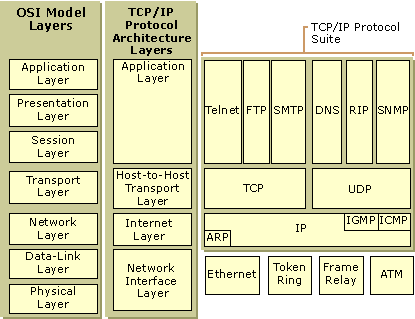Cards In This Set
| Front | Back |
|
What is an enterprise network?
|
Is created by one enterprise for the purpose of allowing its employees to communicate.
|
|
Internet is a shortened word for ___________
|
“interconnected networks.”
|
|
What does ISO stand for?
|
The International Organization for Standardization
|
|
What does OSI stand for?
|
Open System Interconnection
|
|
What does RFC stand for?
|
Request for Comment
|
|
What are the 4 layers of the TCP/IP model?
|
 Application layer Transport layer Internet layer Network Interface layer |
|
Define the application layer.
|
the application layer provides an interface between software running on a computer and the network itself.
|
|
What does HTTP and HTML stand for?
|
Hyper Text Transfer ProtocolHyper Text Markup Language
|
|
To get the web page from the web server, the client sends something called a _______ to Larry. This header includes the command to ______a file
|
HTTP header “get”
|
|
What is same layer interaction?
|
Communication that happens between two devices at the same layer through the use of headers.
The two computers use a protocol to communicate with the same layer on another computer. The protocol defined by each layer uses a header that is transmitted between the computers, to communicate what each computer wants to do. |
|
The TCP/IP transport layer consists of two main protocol options: What are they?
|
The Transmission Control Protocol (TCP) and the User Datagram Protocol (UDP).
|
|
How does TCP provide error-recovery to the application level?
|
TCP provides an error-recovery feature to the application protocols by using acknowledgments
|
|
What is adjacent layer interaction?
|
On a single computer, one layer provides a service to a higher layer. The software or hardware that implements the higher layer requests that the next lower layer perform the needed function.
|
|
What does the term encapsulation refer to?
|
The term encapsulation refers to the process
of putting headers and trailers around some data. |
|
What is the process by which a TCP/IP host sends data (5 Steps)
|
Step 1 Create and encapsulate the application data with any required application
layer headers. For example, the HTTP OK message can be returned in an HTTP header, followed by part of the contents of a web page. Step 2 Encapsulate the data supplied by the application layer inside a transport layer header. For end-user applications, a TCP or UDP header is typically used. Step 3 Encapsulate the data supplied by the transport layer inside an internet layer (IP) header. IP is the only protocol available in the TCP/IP network model. Step 4 Encapsulate the data supplied by the internet layer inside a network access layer header and trailer. This is the only layer that uses both a header and a trailer. Step 5 Transmit the bits. The physical layer encodes a signal onto the medium to transmit the frame. |



